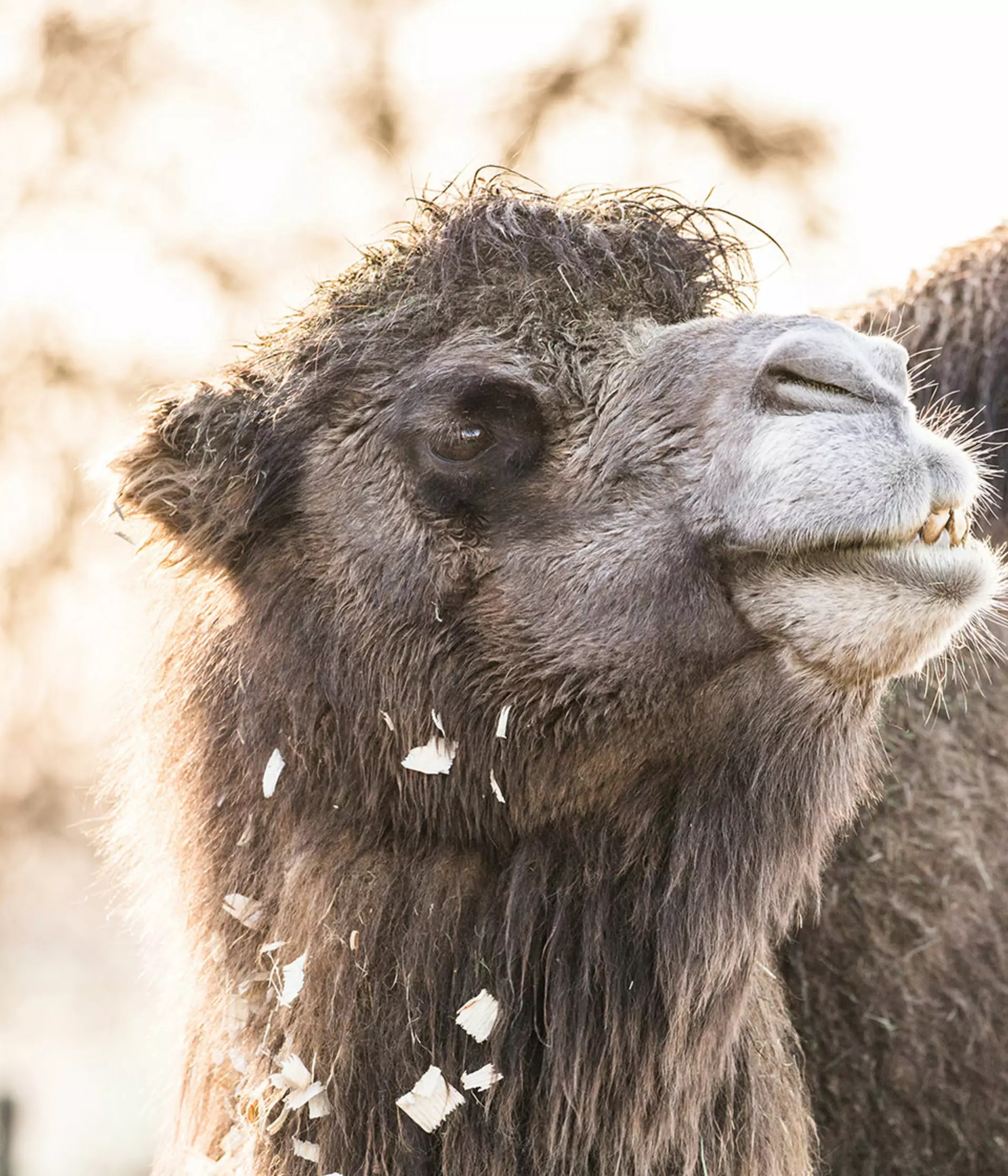Are there camels at London Zoo?
Yes, London Zoo is home to two domestic Bactrian camels, Genghis and Noemie - look out for them in the Orange Zone of the Zoo.
Genghis and Noemie are important ambassadors for their relatives in China and Mongolia, the critically endangered wild camel (Camelus ferus).
What do domestic Bactrian camels look like?
Camels have broad feet to walk easily on desert sand. They also have long eyelashes and nostrils that can be closed to protect them from the sand. When there is plenty of food to eat, camels build up fat in their humps. Unlike their Middle Eastern cousins, they have two humps. Able to withstand incredible temperatures ranging from 40C to -30C, they grown a dense shaggy coat that they shed in the spring to keep cool.
What do domestic Bactrian camels eat?
Leaves, grasses, shrubs.
Domestic Bactrian camel facts
- They differ from all other mammals in the shape of their red blood cells, which are oval instead of circular.
- Perfectly adapted to desert life, they can go for days at a time without drinking or eating. When they reach water they can take in as much as 57 litres to restore the normal amount of body fluid.
- They are the only land mammals that can drink salty or brackish water with no negative effects.
How many humps does the domestic Bactrian camel have?
The domestic Bactrian camel has two humps.
With less than 950 known to exist in the wild, the critically endangered wild camel (Camelus ferus) survives only in Mongolia and China. At ZSL, we're working in a protected area of the Mongolian Gobi Desert to protect the species.
